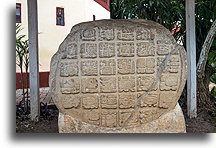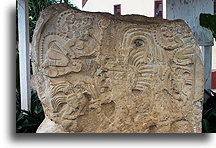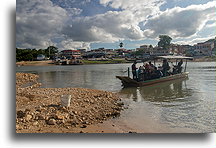Journey through the Maya lowlands
November 30



From El Ceibal we headed south into Guatemala. First, we stopped in Flores. The old part of town located is on an island on Lake Petén Itzá, connected to the mainland by a short causeway. In pre-Columbian times, Flores was a city called Nojpetén and the capital of the last Maya kingdom that the Spaniards conquered. The kingdom of Peten Itza fell into the hands of the Spanish conquerors 172 years after the defeat of the Aztec empire by Hernán Cortés in 1525.




Nojpetén was densely built up with temples, palaces and thatched houses. According to Spanish reports from 1698, the city could contain as many as twenty-one temples. Buildings appeared to be very similar in design to the main pyramids of Chichen Itza and Mayapan. It is probably because after the collapse of these cities in Yucatan, the Itza people moved here and built the city of Nojpetén as their capital.



Nothing is left of the ancient Nojpetén. Modern Flores was founded on the ruins of a Maya city destroyed by the Spaniards. However, the street layout was inherited from the pre-Columbian city. The main streets run in cardinal directions and intersect at the highest point of the island, now occupied by the Catholic Church. For Spaniards, it was a rule that churches were built on the rubble of demolished temples in order to transform places of the old cult into a new, Christian one. In the present square next to the church, we have noticed original fragments of several ancient Maya stelae. These are the only remains of the old Nojpetén in Flores.



After a short visit to Flores, we continued our journey through Maya lowlands. Our progress stalled at Sayaxché. We had to wait in line of cars and trucks for over an hour to take the ferry across the Río de la Pasión. Interestingly, the ferry carrying more than 10 vehicles powered is by an ordinary outboard motorboat engine mounted outside of the ferry’s sides. From there, only 22 km of the road and we reached El Ceibal, small ruins of another Maya city.




El Ceibal had a major period of development in the late Preclassic period (400 BC - AD 200). The so-called Preclassic collapse led to decline between AD 200 and 600. In the late Classic period, El Ceibal relapsed and flourished again, however the final abandonment of the city took place in the 10th century


Out of the hundreds of identified buildings, only two have been restored at El Ceibal. One of them is a low pyramid A-3 with stairs on each of the four sides. There is stela standing at the bottom of each stairs. The pyramid had a square temple at the top. The temple had a door at each of all four stairways. More than 50 stelae have also been identified in El Ciebal. They depict rulers and important people and describe the most important events. From the hieroglyphic inscriptions on the stelae, scholars can write up the unknown history of the Maya civilization.


Late, long after sunset, we arrived at the center of the local community near Cuevas De Candelaria. This was the place for us to spend a night. It was a complete surprise to meet Anna, a Polish woman traveling alone on a motorcycle across both Americas. We sat together for a long night and shared travel stories. Anna was on her way to Alaska. She began the journey in Ushuaia at the southern tip of South America.










